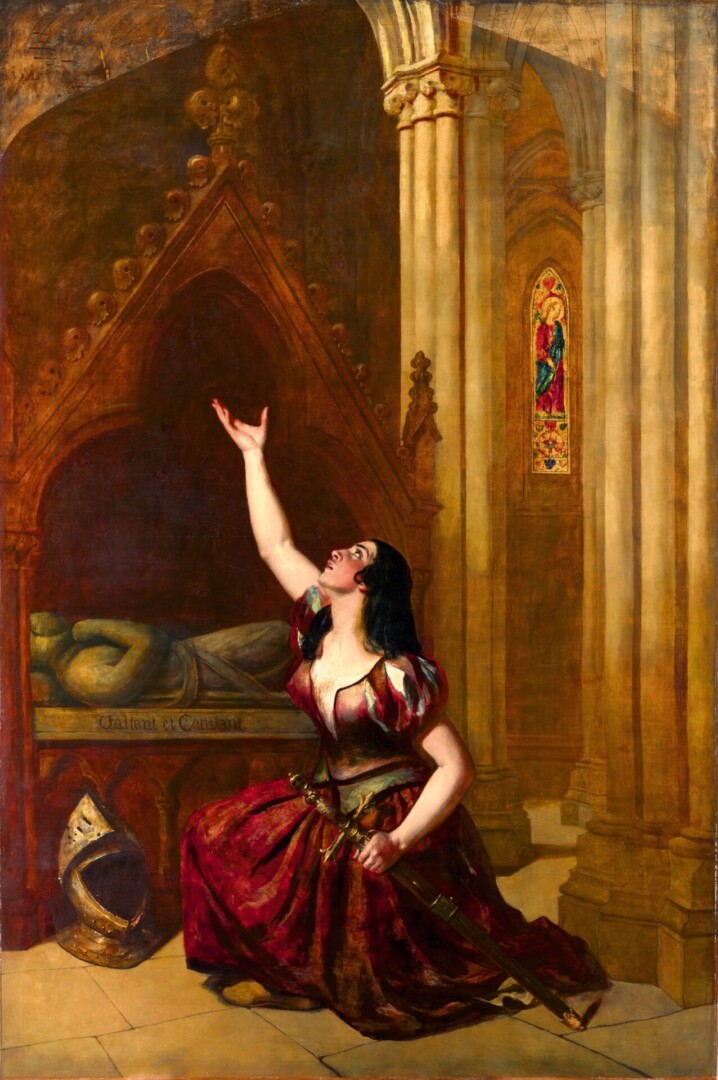A legendary triptych: William Etty at Beaux-Arts
In the 19th century, Joan of Arc exerted a fascination far beyond the borders of France, and even in England, which maintained an ambiguous relationship with her memory. William Etty, one of the leading English artists of the first half of the century, was a great admirer of Joan of Arc, and his last trip to France, in 1843, took him to Rouen and Orléans, in the footsteps of La Pucelle, to complete a large triptych on which he had been working since 1839. He was then at the height of his fame. Indeed, in 1839, he planned to complete a series of nine history paintings embodying the great values of humanity with a triptych dedicated to Joan of Arc. In this modern Judith, religion, loyalty and patriotism are addressed through three episodes from the life of the Maid of Orleans: Joan of Arc finds the sword in the chapel of Sainte-Catherine-de-Fierbois, Joan of Arc makes a sortie from the gates of Orleans and scatters the enemies of France, and Joan of Arc, after rendering the most remarkable services to her prince and people, dies a martyr's death for their cause.
The triptych kept him busy for many years. By August 1840, the canvases were ready, but it wasn't until 1842 that he drew the composition of the three subjects in black stone. In 1843, he traveled to France in the footsteps of Joan of Arc, spending two days in Orléans copying the buildings still standing. In 1846, he completed his project for three states of Joan - the saint, the patriot and the martyr - for presentation at the 1847 Royal Academy Salon. The exhibition of the triptych aroused extraordinary enthusiasm, but the panels were dispersed at sales of the three associates after being exhibited for the last time in 1849 on the artist's death. Long known only through engravings, this mythical triptych made news in 1982 when the central panel reappeared at the Colnaghi gallery and was sold for 250,000 francs to the Musée d'Orléans with the help of the French State. The rediscovery of this painting is an immense opportunity for the Musée d'Orléans to complete this triptych, whose central panel has become one of the best-known and most admired works in the collections. It is displayed in the 19th-century large-format room, which will be hung up to add the left panel. Its admirable restoration has restored the fluidity and transparency of William's touch, as well as the painting's warm polychromy.

William Etty (York, 1787- id., 1849), Joan of Arc Finds the Sword in the Chapel of Sainte-Catherine-de-Fierbois, 1846, oil on canvas, H 300 x W 200 cm
Museum of Fine Arts